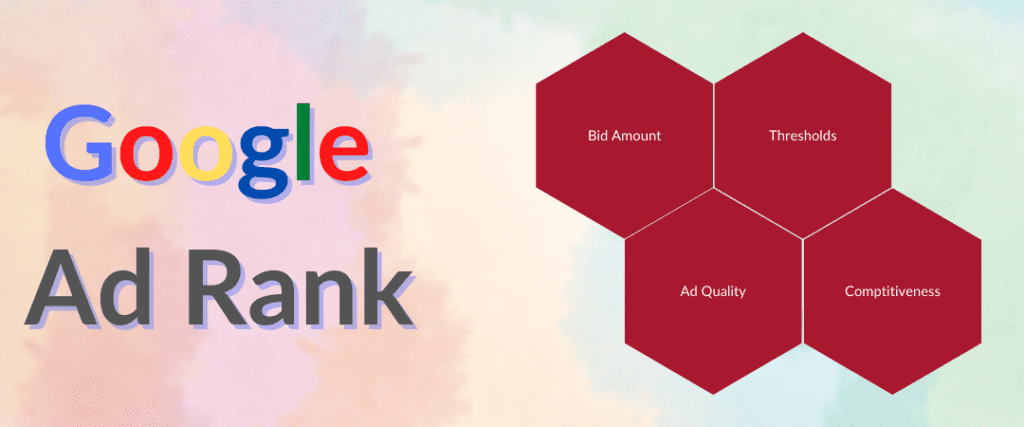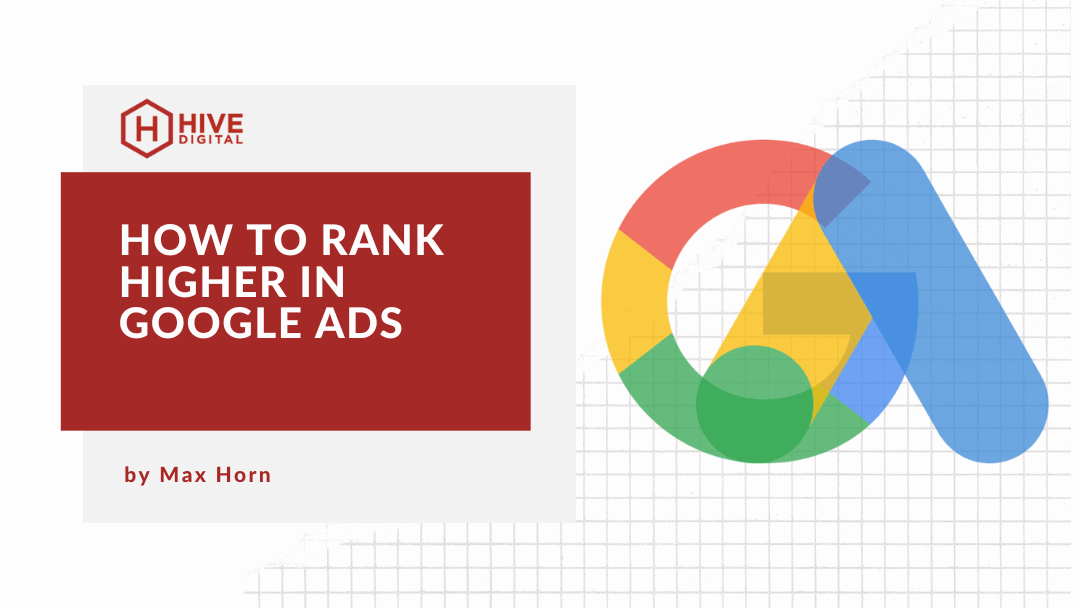HOW TO RANK HIGHER IN GOOGLE ADS
Online advertising has become an essential and critical part of a brand’s growth strategy. Companies of all sizes invest in Google Ads each day to expand awareness and connect with customers. With the amount of users online at any moment, search engines have a myriad of opportunities to serve pay-per-click ads on their platform.
On Google, pay-per-click ads are shown on the search engine results page (SERP). Advertisers pay to strategically place their ad in front of relevant consumers on the SERP. This way the advertiser does not pay to display an ad, they are only charged when someone clicks on the ad. But with Google, it’s not always about the money. There are so many other factors considered besides the highest bidder when it comes to the ad rank. Below we examine which factors Google uses in determining ad position and why it is important to understand.
WHAT IS AD RANK?

Ad position is determined using a formula called ad rank. This metric is recalculated each time a search query matches a potential advertiser’s keywords and impacts whether your ads are shown. Ad Rank is exactly what it sounds like, a value that’s used to decide which position your ads will be shown on the search results, and takes the following into consideration:
- Bid amount
- Auction-time ad quality
- Expected CTR
- Ad relevance
- Landing page experience
- Ad Rank thresholds
- Competitiveness of an auction
- Expected impact of assets and other ad format
Even though Google considers your bid mount as a factor, it’s only a ticket to the auction. In my experience, Google puts more weight on the other factors.
CASE STUDY
I once took over a home service account. The search terms were excellent, they were spending all the daily budget but the Search Impression Share was an average of 24.91% for the account. Looking at the Impression Share Lost metrics, they were losing almost 74.82% due to Ad rank.
We develop a plan to adjust the ad copy and overhaul all the landing page content to be more on brand and speak to the ads. Guess what happened? After 6 months, impression share went up to 63% and impression share lost due to rank decreased significantly and the average CPC went down by 11%.
WHY IS IT IMPORTANT?
Better quality ads mean better Ad Rank. When your keywords, ad text and landing pages are relevant to each other, you have a higher Quality Score which typically results in a higher ad rank. Google Ads works best when the ads we show are relevant and closely match what customers are searching for. The components of Ad Rank can affect the following:
- Ad auction eligibility:
- Ad quality helps determine the Ad Rank thresholds and whether your ad is qualified to appear at all.
- Your actual cost-per-click (CPC):
- When your ads are High quality, you are eligible to pay less CPC for the same ad spot.
- Eligibility for ad assets and other ad formats:
- A higher Ad Rank increases the eligibility for assets and other ad formats to show, such as image extensions.
Understanding how to interpret Ad Rank and which levers influence performance is a vital part to developing and maintaining a healthy Google Ads account. Ad Rank is a powerful tool Google provides to help advertisers create higher quality ads delivered to a more relevant audience. When the Ads account has a high quality score and high ad rank, it typically leads to lower costs and more advertising success.
If you’re ready to take your Google Ads to the next level or have questions about campaign performance, reach out to us at Hive Digital. One of our PPC experts are happy to perform an audit on your account and come up with a custom marketing plan designed for your business goals.

